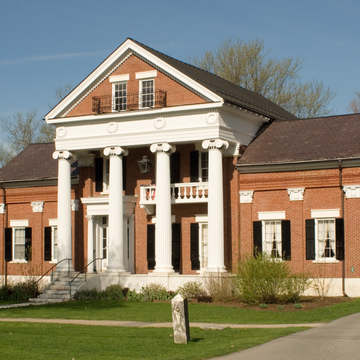The brick, pavilion-with-ells house built for prominent lawyer Rodney Marsh across from his office on Brandon's elite Pearl Street is among the most elaborately detailed Greek Revival buildings in Vermont. Its carved wooden ornament, closely based on details in Asher Benjamin's The Builder's Guide (1839), includes a colossal Ionic portico, a wreath-decorated frieze, a door framed by Corinthian columns, and a two-bay second-floor balcony on brackets. The symmetrical wings are organized by brick pilasters with Corinthianesque capitals that carry a full brick entablature. An octagonal rooftop cupola has been removed.
Soon after the completion of the house, Marsh entered the state legislature, where he pressed his and his town's strong abolitionist views (the Brandon Anti-Slavery Society had seventy-eight members as early as 1837). He opposed the federal Fugitive Slave Law of 1850 as unconstitutional and pressed for Vermont's adoption of personal liberty laws. Local tradition claims Marsh's grand house was an important stop on the Underground Railroad, its more than fifty closets and eight original staircases making it a natural place for concealing fugitives.















